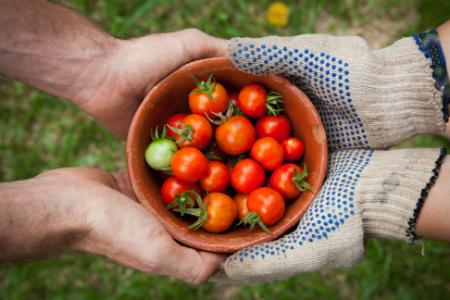7 Ways to Eat a Healthy Lunch on a Budget
Published: Oct 05, 2016

As the FDA deliberates the terms of what food it deems as “healthy” yet again, it’s understandable if some Americans are more confused than ever regarding what they should and should not eat. As sugar takes over the “worst” category from fat, nutritionists and scientists are delving deeper into what qualifies as healthy food, and how food affects us physically and mentally. Overall, most agree that the more whole foods we consume, the better off we’ll be. This includes fresh fruits and vegetables, whole grains, and lean meats.
One of the easiest ways to ensure healthy eating is to cook your own food—and it's budget-friendly too. While it can seem daunting to add meal prep to the list of things you have to do to get ready for work every day, if you plan ahead, you can be eating more healthily, and saving money, with very little extra effort. We’ve narrowed down 7 simple ways to cut costs without cutting standards, and figured out how to make a week’s worth of lunches for less than $30, or even a week's worth of $50.
1. Buy whole foods
When it comes to grocery shopping, sticking to the perimeters of the store are the best, and healthiest, bet. Choose dark leafy greens, fresh fruit and vegetables (preferably those in season), protein, and grains. Stay away from packaged food as much as possible, and buy as many things that don’t need an “ingredients” label. By not buying anything with additives, the weight of figuring out how much sugar, fat, and sodium can be alleviated from your shoulders.
2. Do some math
Before heading into a grocery store, set an approximate budget for all the items on your list. Although some items may seem like they cost more to buy fresh rather than just buying prepackaged food, do the math first: divide the price of the item by how many times it will be included in meals. For example, a couple of squashes can be used for several meals, such as spiralizing one as the base for a noodle dish, roasting one to be tossed in a salad, or grilling one for a sandwich. A bunch of lettuce can serve as the base for half of a week’s lunches and can be used in more than one way, from mixing with rice to filling in wraps and sandwiches.
3. Buy in bulk
When something is in season, it pays to buy more and freeze it for future use. Stocking up can help when schedules fill up and trips to the grocery store seem like an exhausting chore. Wash, cut, and package your foods with labels and date of freezing to make it that much easier when you go to use them. Similarly, buying bags of produce like oranges helps cut the cost of a single orange, so opt for more instead of less if the item isn't likely to perish in a couple of days. The same can be applied to buying a lot of grains or beans at once, since these items can be used in many recipes and will last you more than one week.
4. Make one trip
At the beginning of week, plan the week’s worth of meals and make one trip to the grocery store. This will help keep the shopping list organized, concise, and set an overall budget for the trip. It’s easy to get sidetracked in any kind of store, so having a relatively set list can help limit impulse buys.
5. Forget name brands
Buying store brand foods cuts cost but not flavor. In addition to being cheaper, many grocery stores have a full list of products they sell on their website, where sales are also announced. There are many websites that promote online coupons and discounts, so check out if your grocery store has any active ones you can use. This is a great place to check for deals and can help when choosing what recipes to make that week.
6. Think local
Check out your town’s farmer’s markets for fresh produce, fish, and meat. While helping support your local community, you’re also participating in lowering the burden that food transportation has on the environment. Visiting the farmer’s market at the end of the day is a well-known secret, as farmers are much more inclined to negotiate prices in hopes of getting rid of the last of their produce for that day.
7. Repurpose
Don’t choose five recipes and aim to make all five for lunches in week. Instead, use items from one meal to the next if you’re faced with leftovers. From roasted vegetables to soups, there are many ways to repurpose whatever leftovers you are faced with, so don’t be afraid of saving the scraps!
